|


The Experiences
Experience The Experience Of Being
Buried Alive (June 14/8 PM: Los
Angeles, June 30/8 PM: Vancouver, July 8/7 PM: San Francisco)
Experience
The Experience Of An Illegal Space Race
(June 25/ 2 PM: Los Angeles)
Experience
The Experience Of Growing Money
(July 14/ 8 PM: San Francisco)
Experience
The Experience Of A Magnetism Party
(June 18/8 PM, Los Angeles)
Experience The Experience Of Catapulting Wireless
Devices (Workshop: July 9/6 PM; Event: July 16/2 PM, San Francisco)
Experience The Experience Of A Brick Of Coke
(June 21/8 PM: Los Angeles)
Experience The Experience Of 1 Baud
(Workshop: July 20/6 PM; Event: July 22/5 PM: San Francisco) |
|
|
Experience The Experience Of Growing Money
|
Money is frozen desire. Thus it governs the world. Money is used for all forms of trade, from daily shopping at the supermarket to trafficking in human beings and drugs. In the course of all these transactions, our money wears out quickly, especially the smaller bank notes that are changing hands constantly. Although paper money (consisting of a robust blend of 75 percent cotton and 25 percent linen) is manufactured to endure intensive use (4,000 folds in each direction without tearing!), a dollar bill only lasts an average of 18 months in the USA. The Federal Reserve is responsible for ensuring that money is not too worn, torn or soiled. For this purpose, all bank notes that are returned to the Fed by other financial institutions are tested, and the bills that don't make the grade are pulled out of circulation. Money is dirty, and thus it is a living entity. This is something we take literally: money is an ideal environment for microscopic organisms and bacteria. We want to make your money grow. In a potent nutrient fluid under heat lamps we want to get as much life as we can out of your dollar bills. Take part!
San Francisco (RxGallery): July 14, 8 PM.
|
The Results
July 22, afternoon.
As a picture says more than a thousand words... please click photographs to enlarge.

Volunteer Showdown:
(1) $1: Will Linn
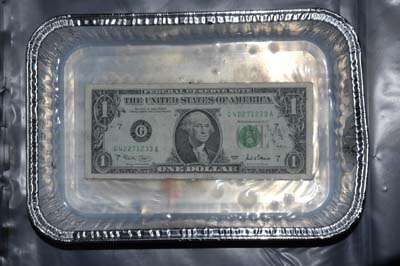
(2) $1: Eddie Codel
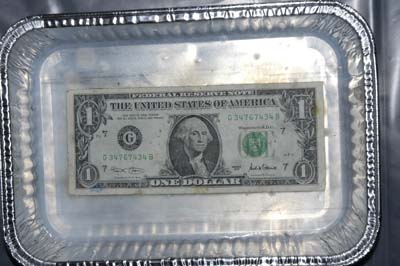
(3) $1: k0re
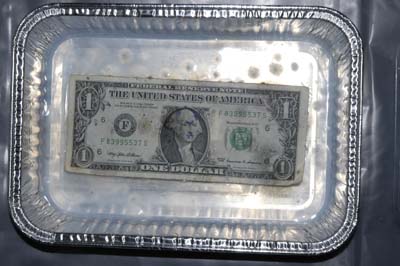
(4) $1: Theresa Tran
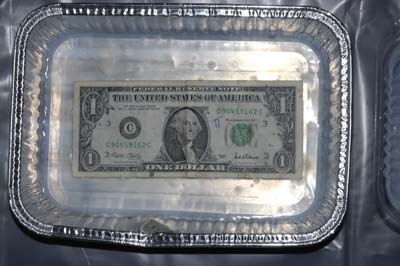
(5) $1: Jeff Furman
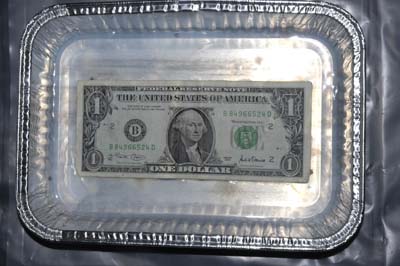
(6) $1: Joules Dybicki
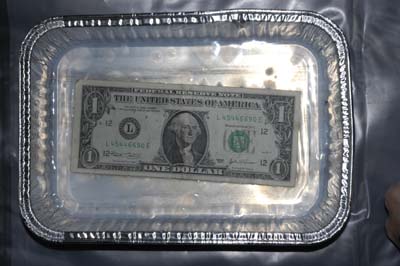
(7) $1: Monika Bernstein
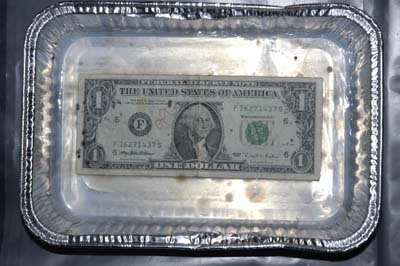
The winner:
(3) $1: k0re
Superior overgrowth!
Try to compare (1)...
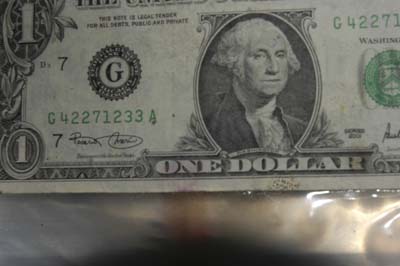
...and (2)...
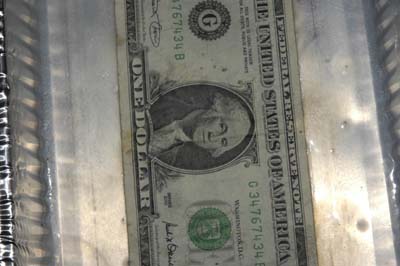
...and these detailed pictures of (3)...
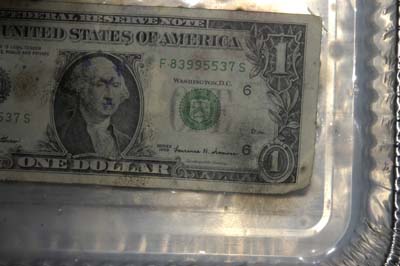
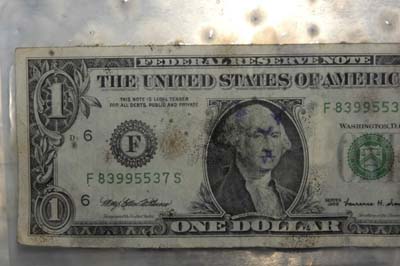
You see...
NAFTA Battle:
(A) 20 Canadian dollars (ISO 4217 code: CAD)
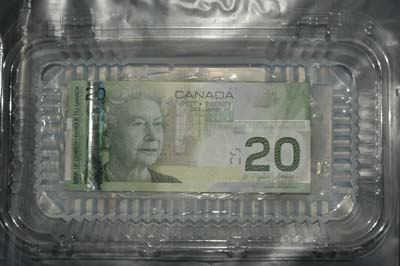
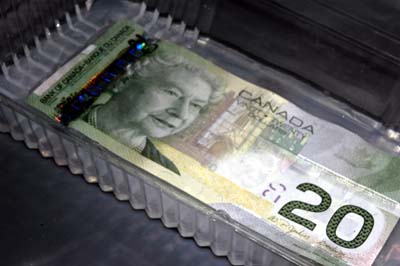
(B) 20 Mexican pesos (ISO 4217 code: MXN)
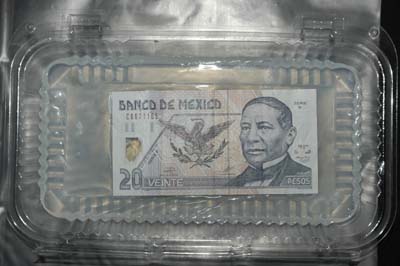
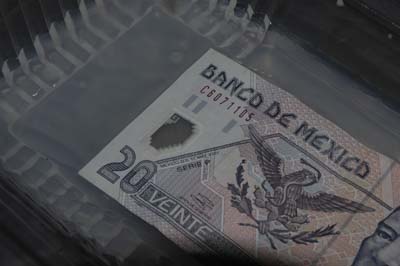
(C) 5 US dollars (ISO 4217 code: USD)
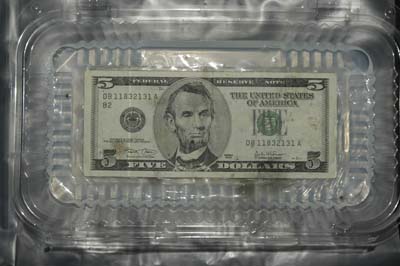
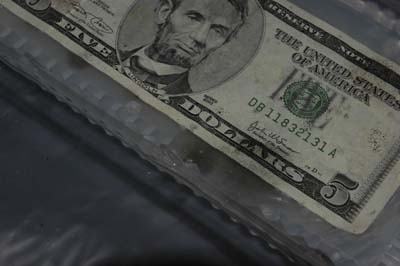
The winner:
(C) 5 US dollars (ISO 4217 code: USD)
Strength of the economy!
And what now?
Dear volunteers!
Have you ever thought about what happens to the cash which is so dirty that it becomes unusable?
In the US, there is a whole division of the Department of Treasury which deals with what is termed "mutilated currency." Currency is classified as mutilated only if it is "not clearly more than one-half of the original note and/or in such condition that the value is questionable and special examination is required to determine its value."
You can send your "mutilated currency" to the Bureau of Engraving and Printing, where it will be examined and -- maybe -- you can get new money back.
[posted by johannes at
4:12 AM]
Experiencing Growth
July 14, evening.
Final preparations.
Five of our petri dishes are ruined (see: "universal remover").
Daniel and Anika buy cheap tinfoil BBQ boxes as unesthetic replacements.
They also collect three special specimens at a local branch of 'Bank of America'.
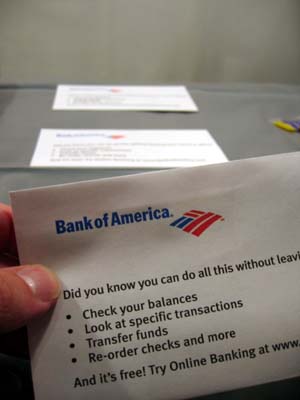
We set up the lab.
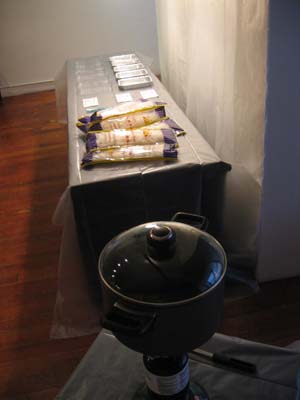
Team meeting.
We change into our protective suits.
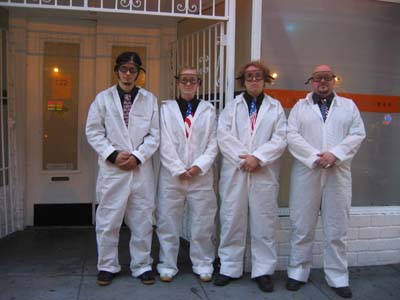
Johannes and Günther turn on the Coleman gas cartridge cooker.
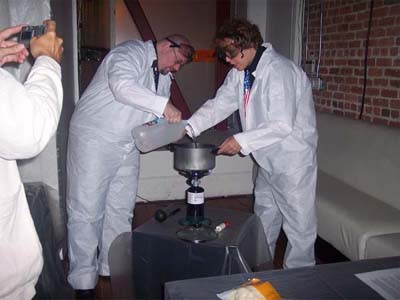
Johannes starts with the intro talk.
"Researchers at the Regional Sophisticated Instrumentation Center (RSIC) at the North Eastern University in Shilong, India, who examined Indian banknotes, found germs which can cause tuberculosis, meningitis, pneumonia, tonsillitis, peptic ulcers, genital tract infections, gastroenteritis, throat infections and lung abscesses. The bugs from banknotes infect the body through scratches on the hands or when the hand touches the mouth or nose."
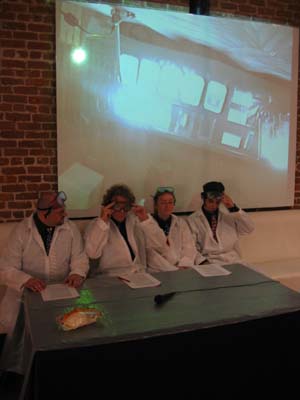
But so-called "First-Worlders" should certainly not be complacent.
"Researchers at the Department of Endocrinology at the Wright-Patterson Medical Center in Ohio collected 68 one-dollar notes from a concession stand at a high school sporting event, and a grocery store check-out counter, and examined them for bacterial contamination. Only four bills (six percent) contained no detectable germs. Five of the 68 bills (seven percent) had types of bacteria that commonly cause infections in healthy persons, such as staphylococcus aureus and klebstella pneumoniae. A staggering 59 bills (87 percent) were contaminated with types of bacteria that can cause significant infections in patients with depressed immune systems. These included such nasty-sounding organisms as coagulase-negative staphylococcus, alpha hemolytic streptococcus and escherichia vulneris."
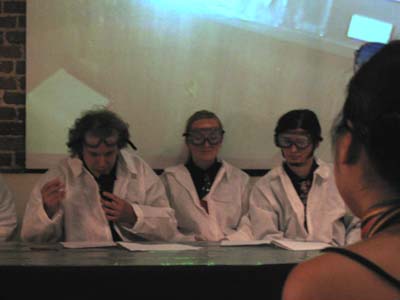
"Most of the notes in circulation have seen better days. They are well-traveled veterans. And we have to accept them. Most of us have gingerly fingered change from the fish or meat vendors, but dirty bills are not confined to wet markets. So the odds are that you are carrying more than cash in your wallet."
We are carrying more around in our wallets than we think.
We want to prove that fact.
We have to put on our latex gloves.
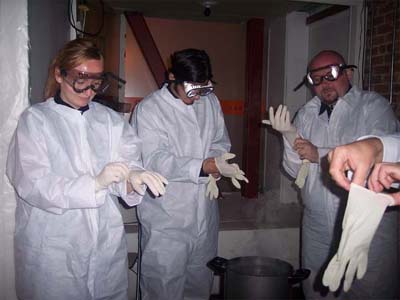
Daniel controls the temperature of the water with a turn-switch.
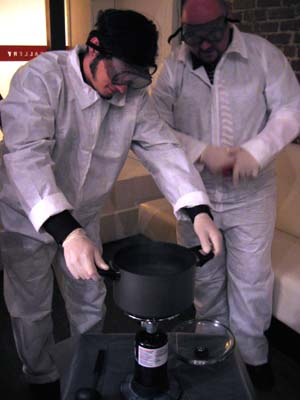
Anika is adding Agar-Ager to the boiling fluid.
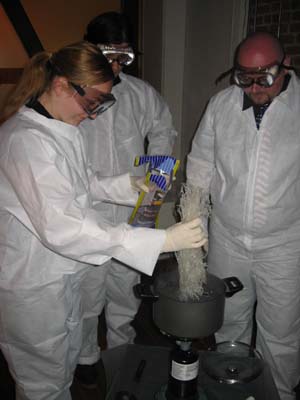
It takes the galactose polymer around five mintues to dissolve.
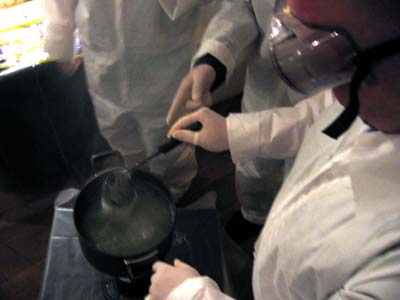
Anika pours the semifluid substance into the petri dishes.
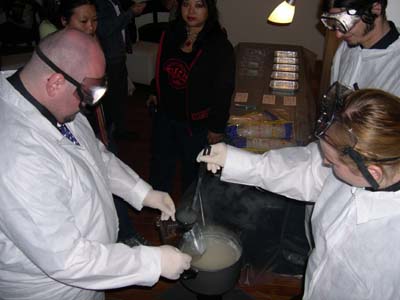
Günther has to be profoundly careful.
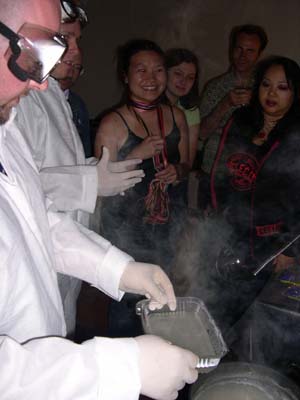
Money is an ideal environment for microscopic organisms and bacteria.
We have to be careful not to put the paper money into our nutrient solution if it's too hot.
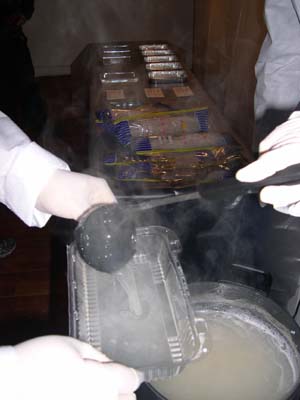
Günther prepares the setting. The audience is waiting patiently for the next steps.
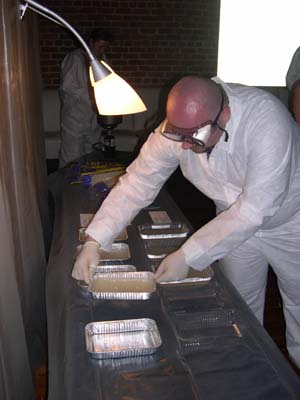
"Federal Reserve note" is the official name for the type of banknote used in the United States, more commonly known as dollar bills. Federal Reserve notes are legal tender currency notes. They are issued by the Federal Reserve Banks and have replaced United States notes which were once issued by the Treasury Department.
We need seven legel tender currency notes to start 'Experience The Experience Of Growing Money'.
Johannes asks the attendees to donate bills.
As assumed they only dispense $1 bills.
That's fascinating on a sociological level, but not on a scientific one.
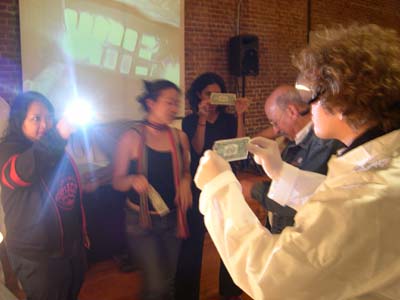
Donors of notes:(1) $1: Will Linn
(2) $1: Eddie Codel
(3) $1: k0re
(4) $1: Theresa Tran
(5) $1: Jeff Furman
(6) $1: Joules Dybicki
(7) $1: Monika Bernstein The notes are placed on the lab table.
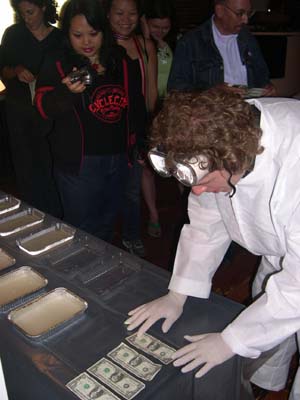
It's time to explain and launch the NAFTA Battle.
Johannes pulls three different banknotes out of three small 'Bank of America' envelopes. In order to not contaminate the notes he uses tweezers.
(A) 20 Canadian dollars (ISO 4217 code: CAD)
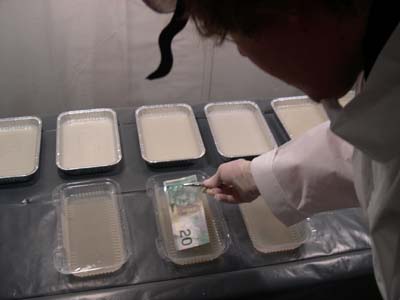
(B) 20 Mexican pesos (ISO 4217 code: MXN)
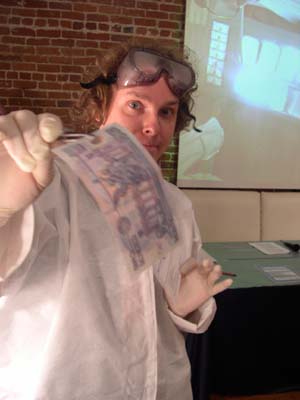
(C) 5 US dollars (ISO 4217 code: USD)
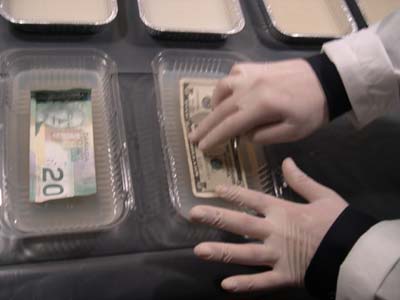
What NAFTA country will win the growth battle?
We don't know, but time will tell.
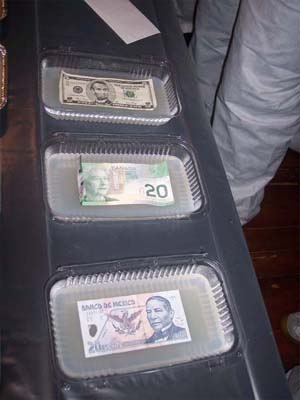
Anika places the collected $1 bills into the substrate.
The donors carefully witness the procedure.
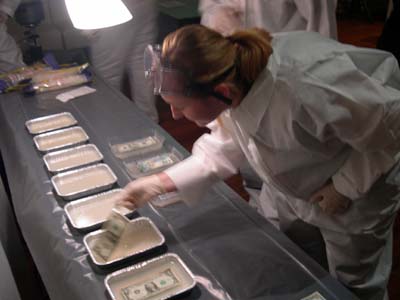
Entities that don't grow are not generally considered to be alive.
Let's observe.
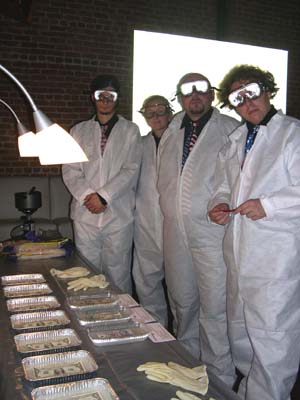
Johannes writes out the 'Experience The Experience' certificates.
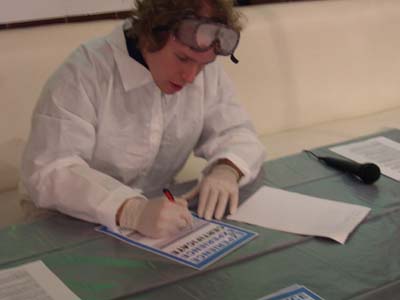
We are professionals and close the presentation with a short summary and conclusion.
But we have to answer many additional in-depth questions.
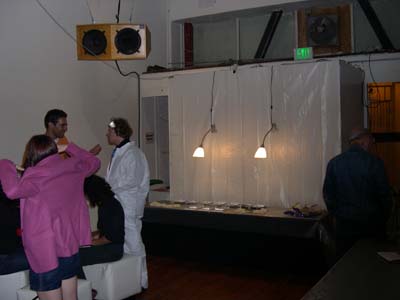
Günther finetunes the location of the petri dishes and adjusts the heating lamps.
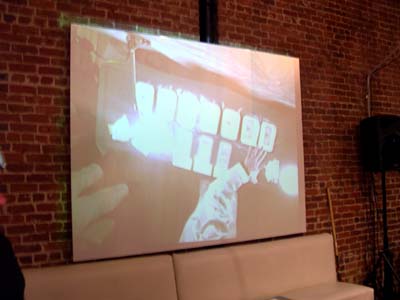
Finally, we can socialize...
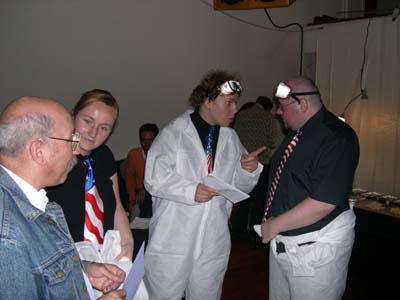
...and check our emails.
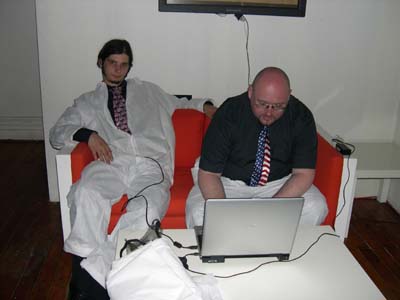
[posted by johannes at
6:31 PM]
Preparing Growth
July 14, morning.
We have to test the quality of our Agar-Agar supply.
It's early... but we can do it.
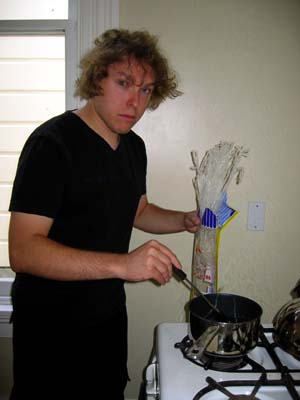
Initial viscosity (commonly perceived as "thickness", or resistance to pouring): swell!
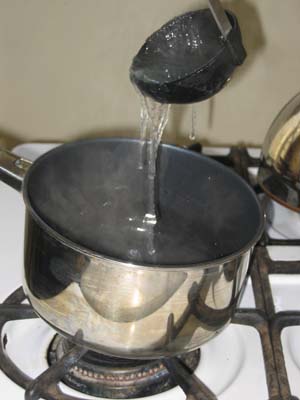
Concealment: phat!
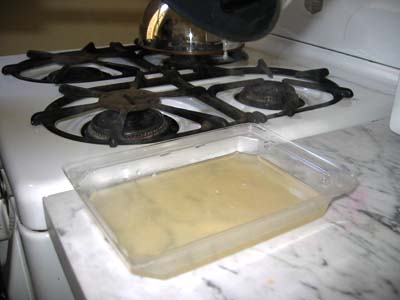
Bottom line: kewl!
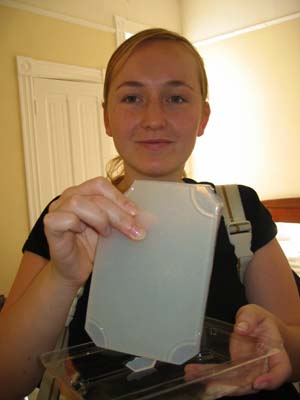
July 14, midday.
We need petri dishes.
We buy bizarre American pastry in plastic boxes and a bottle of antibacterial disinfectant, so-called "Mr. Clean".
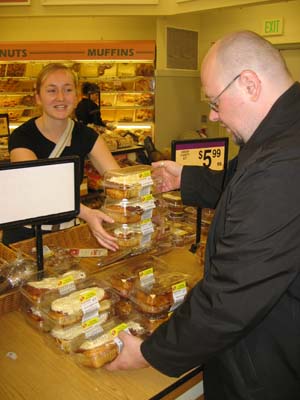
July 15, afternoon.
At Home Depot (Emeryville, CA) we buy protective clothing, several feet of plastic foil and plant growth acceleration light bulbs ("Agro-Lite").
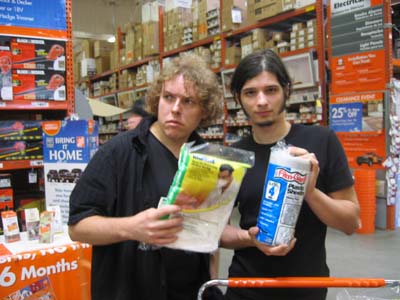
Next door at Sportmart we purchase a quality matchlight propan stove by Coleman.
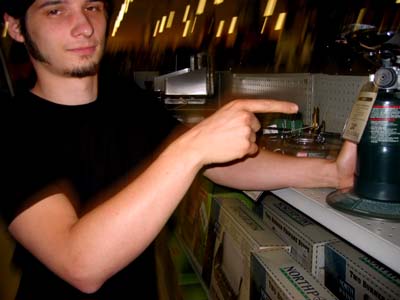
Office Depot sells us two low cost desk lamps.
It's a business doing pleasure with us.
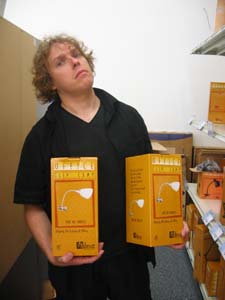
Anika cleans our petri dishes...
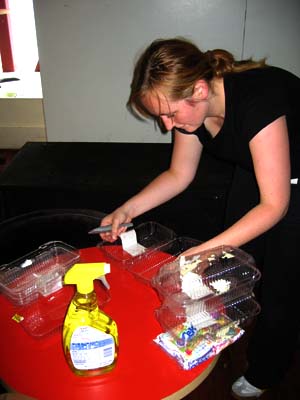
...and gives away the bizarre pastry stuff on the street.
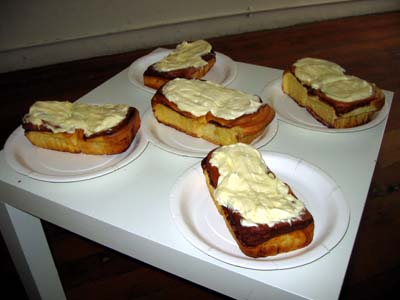
She also tries to remove the price tags on the plastic boxes with a substance called "Goof Up", a "universal remover".
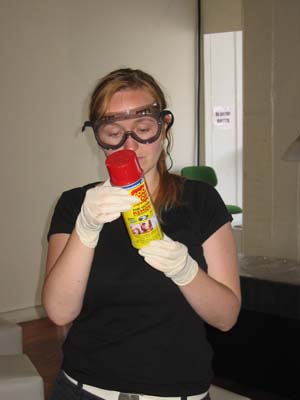
The universal remover desintegrates five of our plastic boxes.
That's why they call it universal remover.
Damn, we have to find five new petri dishes!
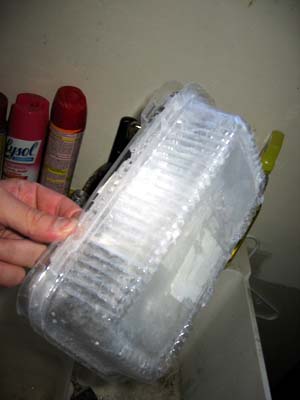
[posted by johannes at
5:55 PM]
Agar-Agar and the Media
July 14, afternoon.
Money is any marketable good or token used by a society as a store of value, a medium of exchange, or a unit of account. Money objects can meet some or all of these needs. Since the needs arise naturally, societies organically create a money object when none exists. In other cases, a central authority creates a money object; this is more frequently the case in modern societies with paper money.
Paper money is dirty, and thus it is a living entity. This is something we take literally. We want to make your money grow.
First, we need to find a potent nutrient fluid.
We choose Agar-Agar.
Agar is a galactose polymer (or Agarose) obtained from the cell walls of some species of red algae or seaweeds (Sphaerococcus euchema) and species of Gelidium, chiefly from eastern Asia and California.
San Francisco locals give us the advice to buy the stuff at Chinatown.
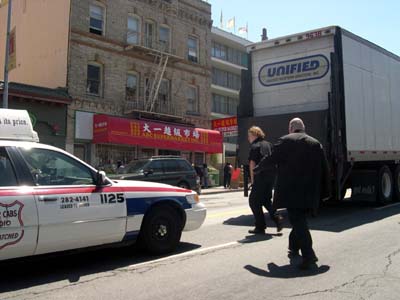
Nutrient agar is used throughout the world as a medium for the growth of bacteria and fungi, but not viruses. The basic agar formula can be used to grow almost all microbes.
The only problem... nobody knows it.
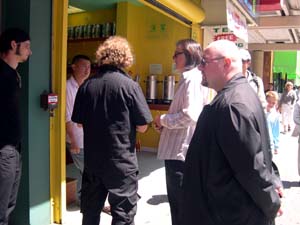
- "We want to buy Agar-Agar."
- "Never heard of that."
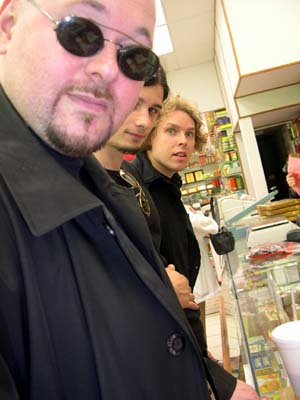
- "We want to buy Agar-Agar."
- "What?!"
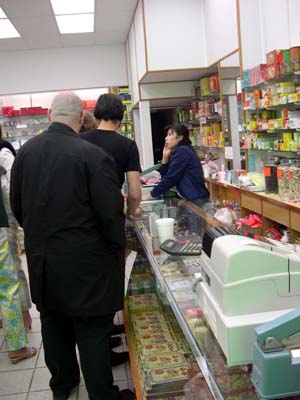
We meet Eddie who runs Webzine.
He wants to help us with some additional info from the web...
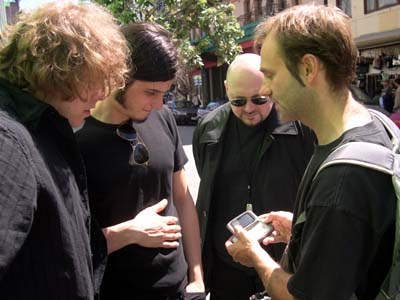
...but we only find out that Agar-Ager sometimes is called Kanten or Agal-Agal, Ceylon Agar.
The stores sell everything, even dried sea horses... but no Agar-Agar.
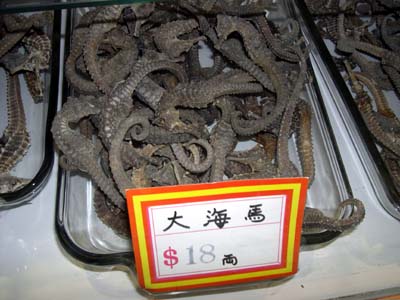
35 minutes later:
- "Do you know Agar-Agar?"
- "Yes, of course. But I don't sell it."
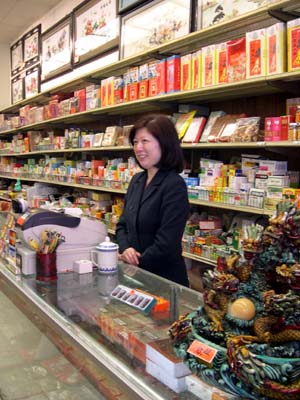
- "But I can write down the Cantonese symbols. That will help you."
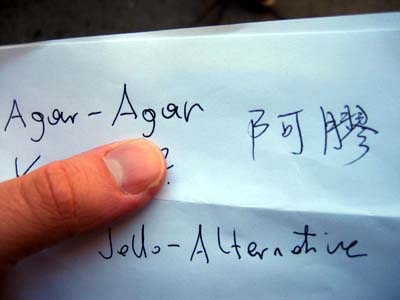
- "Wait, I think that's wrong. I have to correct it. Good luck!"
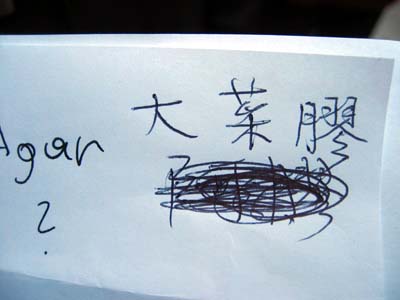
The note helps a lot... and not at all.
- "Yes, yes... but we don't sell it."
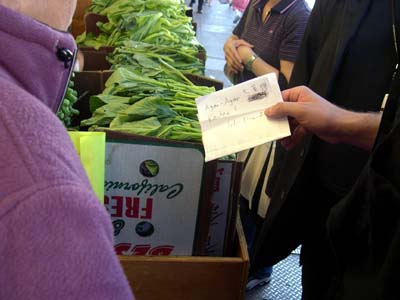
10 minutes later...
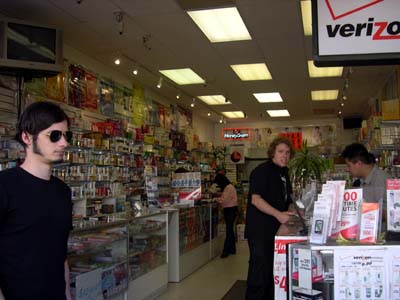
20 minutes later...
Triumph!
- "Yes. One package?"
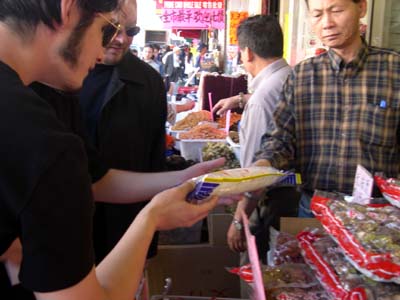
- "No, we need eight!"
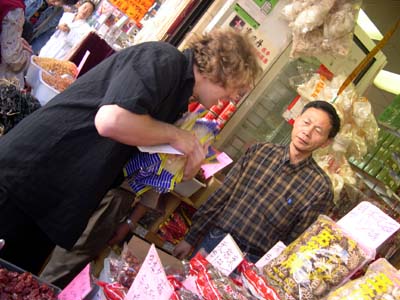
Young urban scientists, happy.
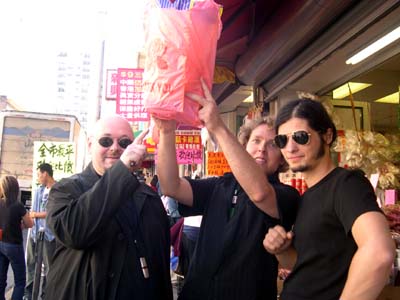
July 14, evening.
Johannes is being interviewed by V. Vale (of RE/Search) for the 'Counter Culture Hour", a TV program broadcast via AccessSF.
They discuss a couple of different topics, and of course they talk about money and growing money.
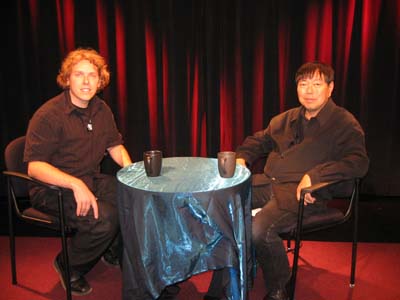
[posted by johannes at
5:16 PM]
Research Gang
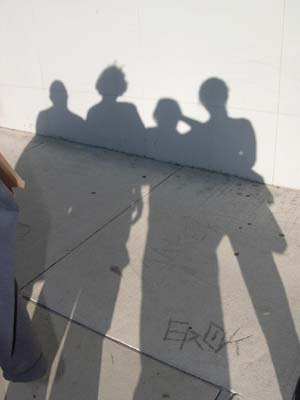
[posted by johannes at
5:13 PM]
Experience The Experience Of Growing Money

[posted by johannes at
11:05 AM]
|